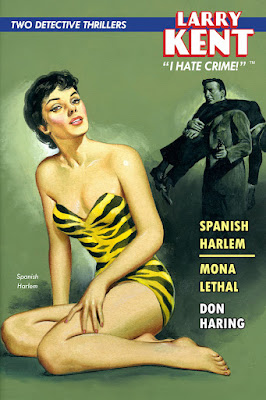The narrative features five men living in a research station miles from civilization in the Arctic. There's three scientists, a mechanic, and a meteorologist. Inside this base sits three main buildings and each of these tiny buildings is connected by a dark narrow tunnel. One of the men mentions that he can hear animal noises outside the doors, which is unusual considering the area is in a heavy thunderous blizzard.
Days later one of the men is alone in the storeroom and hears scratching at the outside door. Considering the temperature is hovering at 60 below zero, nothing alive should be outside in the storm. The man opens the door, begins screaming, and then the reader is left guessing at his demise. This sort of thing plays out again with another member of the research team.
With three survivors remaining, one of them tells the others that through the frost-crusted window he could see both of the dead men standing out in the snow. There's discussion among the men that ancient people in that area believed something supernatural lived in the ice and sort of embodied the winter. Needless to say things happen and eventually we're left with one survivor who is armed with a gun and attempting to keep his sanity knowing he's the next victim. But, what is the thing in the ice? Is it a ghost, a creature, Satan himself? I like that Glasby leaves it all subjective. There is an ending to the story, but it's slippery to determine exactly what's happening.
Nightmare on Ice is a fantastic reading experience with a sense of dread looming in every dark crevice. I love books and stories set in snowy locales or frozen settings so the atmosphere and temperature was perfect. One of my favorite horror films is John Carpenter's The Thing and this novelette contained those vibes, which in itself was based on the 1938 novella "Who Goes There". Glasby's tale is mostly what I consider a horror entry but I guess you can lump it in as a science-fiction with the possibility that the evil thing is from another world or planet. Regardless of genre, this was entertaining and highly recommended.
You can get Pulp Adventures for ten bucks on Amazon HERE and as I mentioned earlier it contains this novella and a lot of other great content. Bold Venture Press does such a great job with this magazine and I have no qualms supporting their efforts. This issue also contains pulp fiction stories from E.C. Tubb, Shelley Smith, Ernest Dudley, and contemporary stories from authors like Jack Halliday and Michael Wexler. There's also a Rough Edges article written by author James Reasoner reviewing three novels.




















